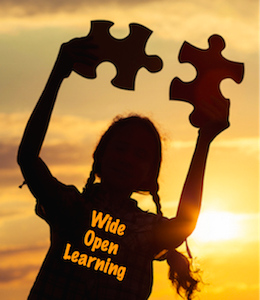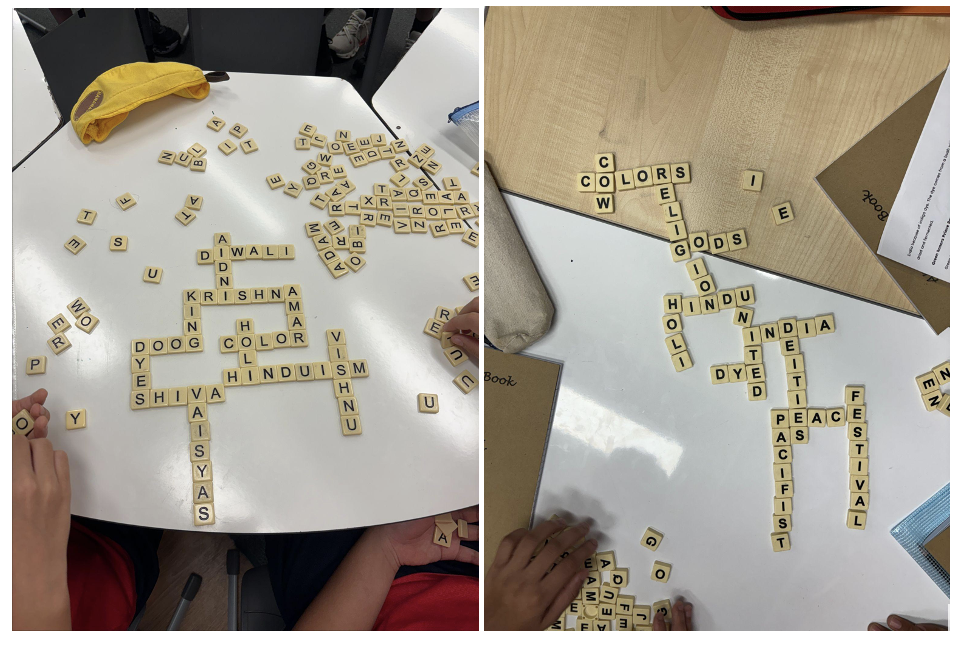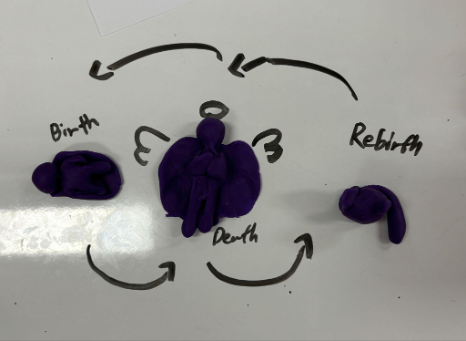Content-related Brain Breaks for Fun Learning
A MiddleWeb Blog
 How do we infuse fun into our classes and keep the content fresh in our students’ minds? Research has shown that students experience cognitive fatigue as the day progresses, and that physical activity enhances academic performance. My sixth grade classes are long, with some blocks lasting 85 minutes.
How do we infuse fun into our classes and keep the content fresh in our students’ minds? Research has shown that students experience cognitive fatigue as the day progresses, and that physical activity enhances academic performance. My sixth grade classes are long, with some blocks lasting 85 minutes.
I chunk the activities in my class so that we have frequent movement and changes, but on those extra long days, only some play will do. The good news is there are lots of ways that we can have fun while still using the content we are studying. Here are a few ways I’m doing that in the first month of school.
Over and Under Game
I listened to an improv comedy podcast where they played this game that I thought would adapt well to some classroom fun. To play the game, create groups of at least three students. Ask a question with a numerical answer and ask Student A to guess an answer. The question should be one that they wouldn’t know. For example, during our World Religions Unit, one question I ask is, “What percentage of the world practices Hinduism?”
After Student A says a number, the other students need to say if they think the actual answer is Over or Under Student A’s guess. When I reveal the correct answer, students who correctly guessed if it was over or under get a point. The next round has Student B guessing a number, and so on. My sample version from our World Religions Unit can be seen here.

This game reminds me of an activity I made as a provocation before a field trip to Singapore’s National Museum. Students had to move to one side of the room or the other, based on whether they thought the actual number of a statement on a slide was higher or lower. Combining movement, helpful information, and anticipation for our trip, it was a fun brain break that I should replicate more.
Odd One Out
One of my summer professional reading texts was Keith J. Topping’s Improving Thinking in the Classroom. My favorite takeaway in the book was a “Thinking Through Geography” strategy called Odd One Out. This activity gives students a list of words and asks them to pick and each explain which one is different. The example given was related to geography vocabulary, but I’m adapting it to other contexts.
In this brain break, which I’m calling “Describe a Difference,” three terms will be shown on a slide, with each having a designated area in the room (think of the game “Four Corners”). Students think of one difference and head to that corner. Then we take turns hearing different ideas and why they were chosen.
In making my slides for the brain break (see my World Religions version here), I took care to make it a mix of content-related and general topics. With the template made and the students familiar with the rules, this is an easy activity to replicate throughout the year.
Bananagrams
This one might involve visiting thrift stores or putting the word out to friends, but if you can collect multiple sets of the Bananagrams game (or make sets using old Scrabble tiles), you’re set for this activity. Give students a topic and a time limit (a few minutes is good), and have them make as many intersecting words as they can. Think of it as creating their own crossword puzzle on the topic. Once time is up, each group should decide on their most and least “obvious” connections and explain them to the class.

Break out the Play Doh
Students love sensory play! For this brain break, give everyone some Play Doh or clay, put on some relaxing music and ask them to represent a concept from your unit. It could be something specific, like when I asked students to represent karma and samsara during our study of Hinduism, or it could be their choice of what is most important to remember. Research shows that manipulation of objects strengthens students’ understanding and retention. In addition, it’s really fun. Give them a chance to discuss what they’ve made and see what others have created.
































Inspiring! Thanks!!